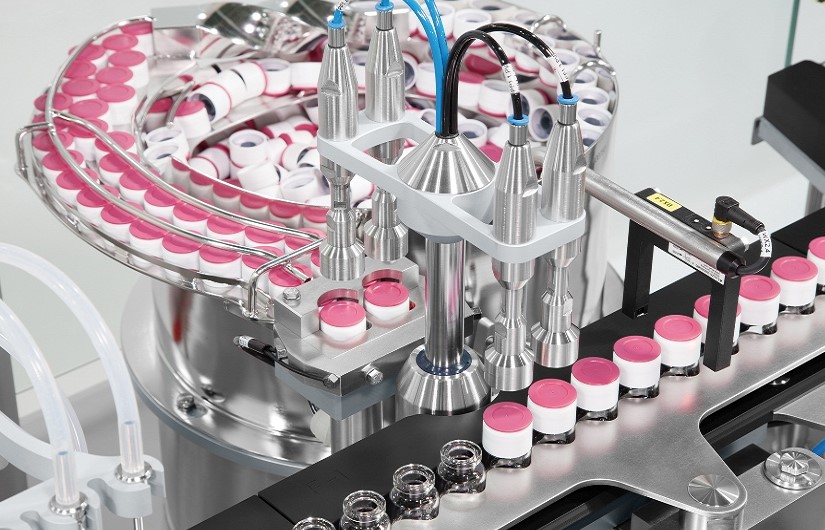Cappers for Pharmaceutical Fill Containers
Cappers are essential machines used in the pharmaceutical industry to secure closures on filled containers, ensuring
their integrity and preventing any tampering or contamination. Here are some key points regarding cappers for fill
containers:

-
Machine Types:
There are various types of cappers available, including manual cappers, semi-automatic cappers, and fully
automatic cappers. The selection of the capper depends on factors such as production volume, container type,
closure type, and process requirements.
-
Closure Compatibility:
Cappers should be compatible with the closure type used for the containers. This includes considerations
such as the closure size, shape, and design to ensure proper fit and sealing. Cappers may have different
mechanisms, such as screw cappers, snap cappers, or crimping cappers, to accommodate different closure
types.
-
Closure Integrity:
Cappers should apply sufficient torque or pressure to securely close and seal the containers. The closure
should remain intact during transportation, storage, and use, preventing leakage, contamination, or
tampering.
-
Adjustability and Flexibility:
Cappers should have adjustable settings to accommodate different container and closure sizes. They should be
able to handle various container shapes, such as bottles, vials, or tubes. The capper's design and settings
should be adaptable to different closure materials, such as plastic caps, aluminum seals, or rubber
stoppers.
-
Quality Assurance:
Cappers should undergo regular maintenance and calibration to ensure consistent and accurate closure
application. The capper's performance should be regularly monitored and inspected to identify any issues or
deviations.
-
Validation and Qualification:
The qualification and validation of cappers may be necessary to ensure their suitability for the specific
filling process and product. This may involve testing for closure torque application, closure integrity,
line speed optimization, and equipment performance under different operating conditions.
-
Regulatory Compliance:
Cappers used in the pharmaceutical industry must comply with relevant regulatory requirements, such as those
outlined in pharmacopeial standards (e.g., USP, EP) and regulatory guidelines (e.g., FDA, EMA). Compliance
with good manufacturing practices (GMP) is crucial to ensure the quality and safety of the final
pharmaceutical products.
It's important to work closely with the capper supplier and follow appropriate industry guidelines and
regulatory requirements when selecting and qualifying cappers for fill containers. Collaboration with quality
assurance, regulatory, and validation teams is crucial to ensure that the cappers meet the necessary quality
standards and contribute to the overall integrity of the filled pharmaceutical products. Regular maintenance,
calibration, and monitoring should be performed to ensure consistent and reliable performance of the
cappers.